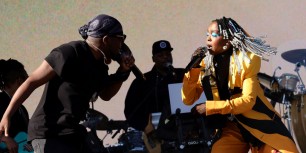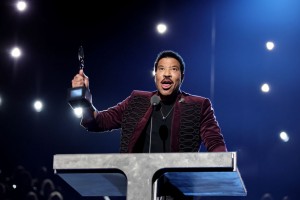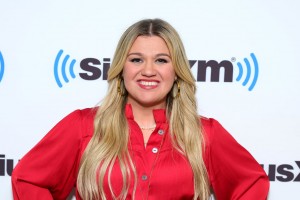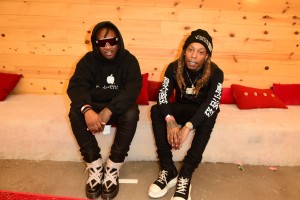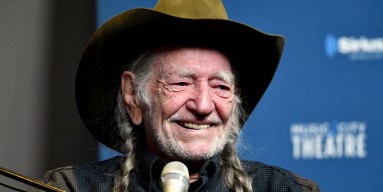Sometimes musical history makes sense, such as when The Beatles—by all means the greatest act in the history of modern music—also has the record for most no. 1 albums of all time, with 19. Sometimes musical history makes less sense in terms of sales, as is the case with Bob Dylan. The folk legend is one of the most influential performers of all time-no. 2 to only The Beatles if you take Rolling Stone's word for it—but that didn't necessarily translate to sales for ol' Zimmy. "The Voice of A Generation" only got to the top of the charts five times in his more than five decade career. That's more than your average performer for sure, but given his longevity and acclaim, we might have expected more. You may be surprised which five were his best-selling upon debut.
Planet Waves (1974)
The Freewheelin' Bob Dylan. Highway 61 Revisited. Blonde on Blonde. All of these albums were released by Dylan during the '60s, and all of them are considered among the finest American albums of all time, with good reason. However none of them would become the songwriter's first no. 1 record, despite the acclaim that they gathered. In fact, Dylan wouldn't top the Billboard 200 until 1974 with Planet Waves, an album held much less dear than the aforementioned titles. The attention gathered may have been thanks to his performances with The Band, who had gathered a significant fan base on its own in the years leading up to this album. One of the more famous tracks debuted on this LP was "Forever Young," which would gather more attention as a Rod Stewart single later on down the line. It should be noted that although this was his first U.S. no. 1, Dylan was more appreciated across the pond and had been to no. 1 six times in the UK already.
Blood on The Tracks (1975)
Part of the reason why Dylan's sales success on Planet Waves was so surprising was that most critics held his last few albums from that period to be inconsistent at best, especially when compared to his legendary '60s song collections. And, at first, Blood On The Tracks earned "meh" reviews from music writers. It didn't take long for that opinion to shift however, and looking back at the album upon its 40th anniversary, nearly every agency you can think of looks upon the album as one of Dylan's best efforts, if not the best. Although they may have critiques the album when it first dropped, Rolling Stone, The Village Voice and The Chicago Tribune have all since given it perfect retrospective scores. As for sales, it didn't hurt that "Tangled Up In Blue," one of his most well-known singles, leads the album off.
Desire (1976)
The period between 1974-'76 was the greatest in terms of sales potential for Dylan, with three albums going to no. 1. The Basement Tapes peaked at no. 9 during 1975, victim of only less publicity than a traditional LP. Desire, Dylan's first release in 1976, had the exact opposite force going for it. Although Desire wouldn't be released to a little more than a year later, Dylan had been advertising the songs on the album well during the previous year as part of his "Rolling Thunder Revue," at that point one of the biggest tours in the world. Dylan had used a bevy of big-name opening acts—including Joan Baez and Ramblin' Jack Elliott—while Dylan's own band would feature David Bowie'a guitarist Mick Ronson as well as T-Bone Burnett. The album, including his iconic protest song "Hurricane," had already been recorded by this same group of performers but Dylan had plenty of time to build hype in concert.
Modern Times (2006)
Following Desire, Dylan would fall far from the good graces of music buyers and he only came within the Top 10 of the Billboard 200 twice over the next 30 years. It wouldn't be until 2006 that he once again reached the top of the charts with Modern Times. Although Rolling Stone and other publications praised the album as a return to form for the performer, it was dogged with controversy about the writing credits. Many of the songs were accepted as adaptations of earlier blues and folk standards, however Dylan didn't cite any of them in his liner notes, noting that he merely borrowed the melodies, not the lyrics...aka the same thing that Sam Smith just did with "Stay With Me" from Tom Petty's "I Won't Back Down." Other writers noticed similar lyrics to the words used by poets Ovid and Henry Timrod.
Together Through Life (2009)
Dylan recovered from the controversy surrounding Modern Times and earned his second consecutive no. 1 album in 2009 with Together Through Life, a bluesier album featuring guitar work from Heartbreakers axe-man Mike Campbell and Los Lobos' David Hidalgo. It's interesting to note that although Dylan had achieved six no. 1 albums in the UK up until 1970, he hadn't had one in the region since that time until Together. That made this release his first no. 1 across the pond in nearly 40 years. However his 2015 covers collection Shadows in the Night went to no. 1 in the UK (and no. 7 in the U.S.), making Together Through Life the last time he's gone to no. 1 in his homeland. We'll see if he has more gas in the tank for another no. 1.




